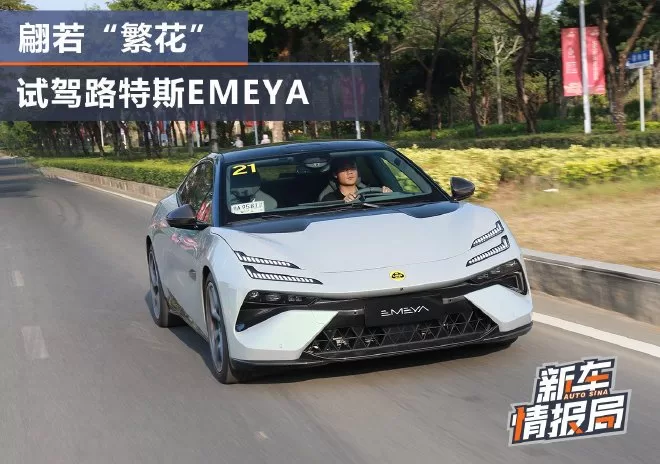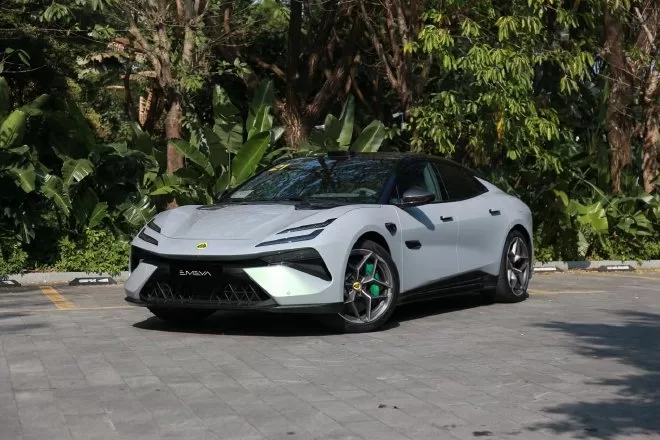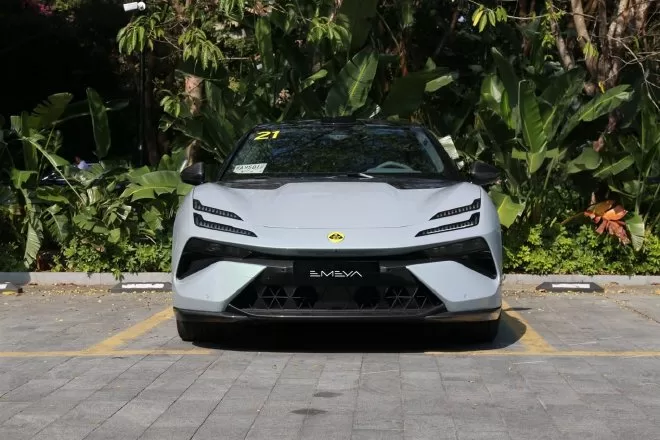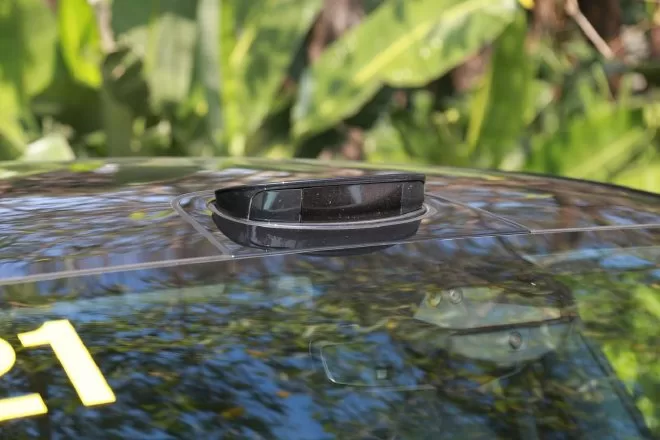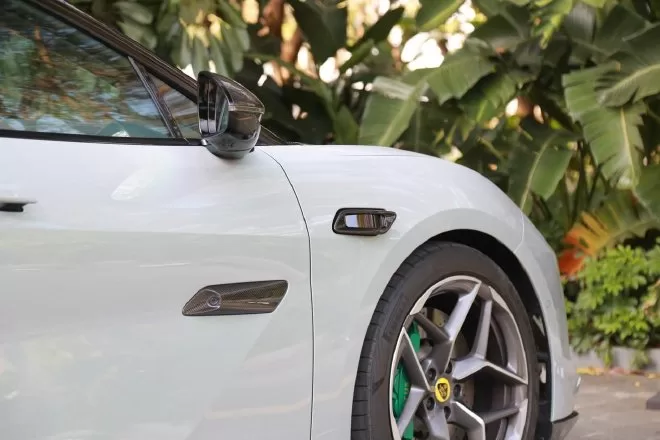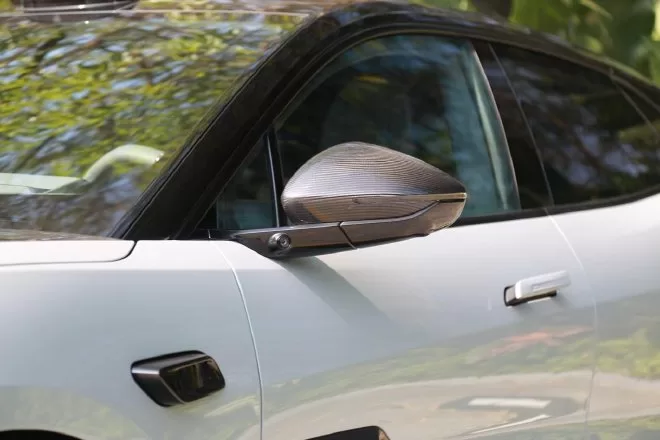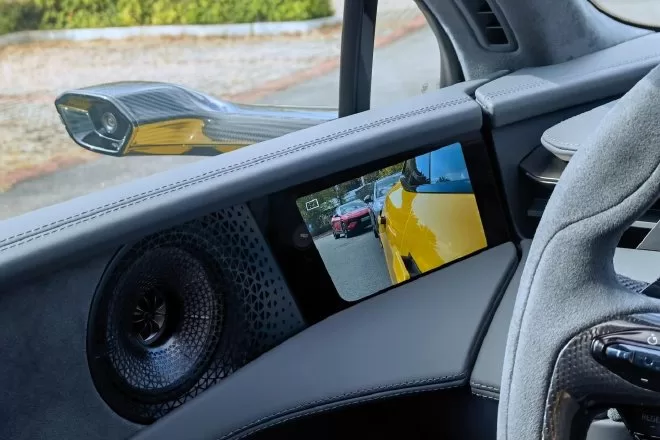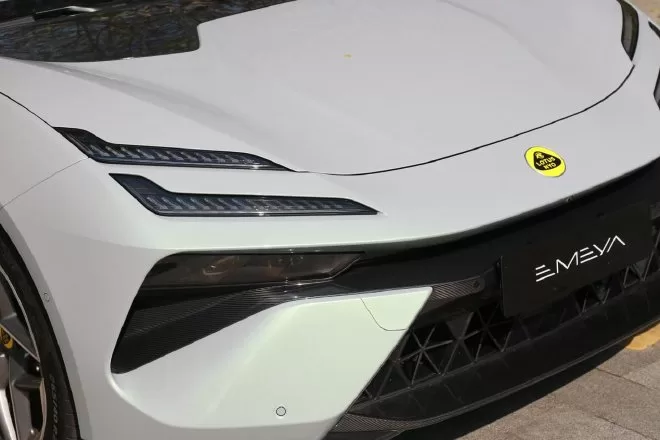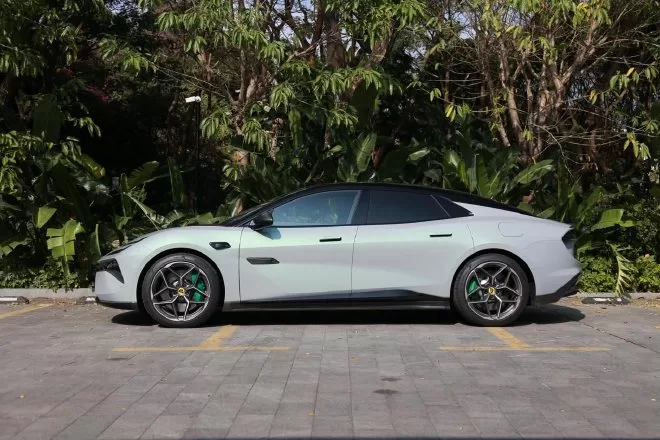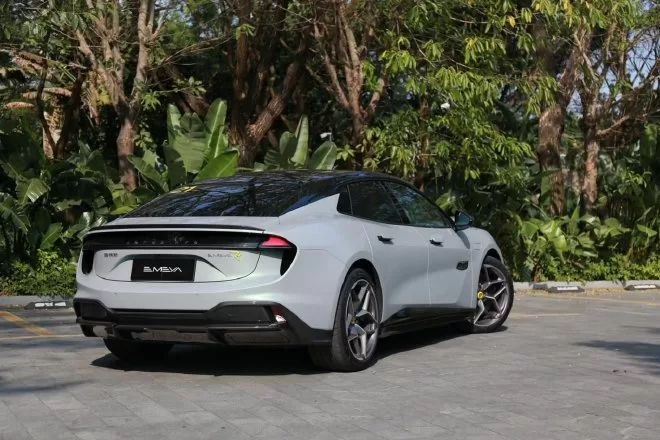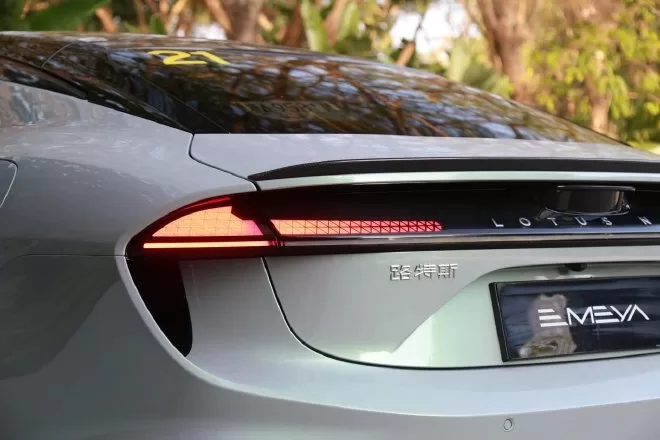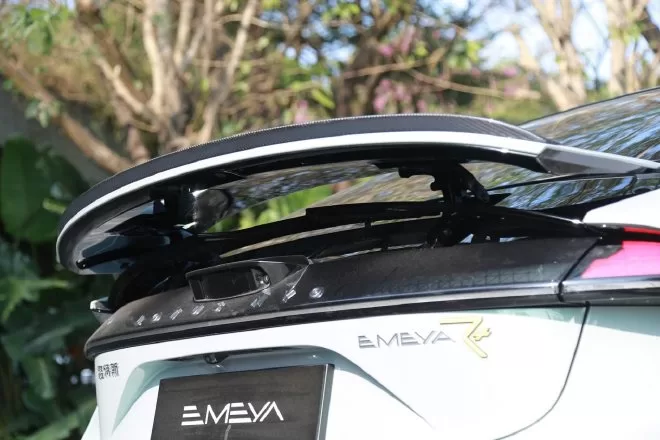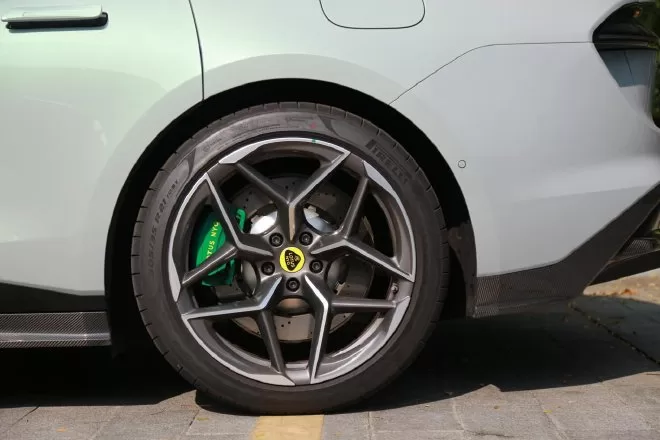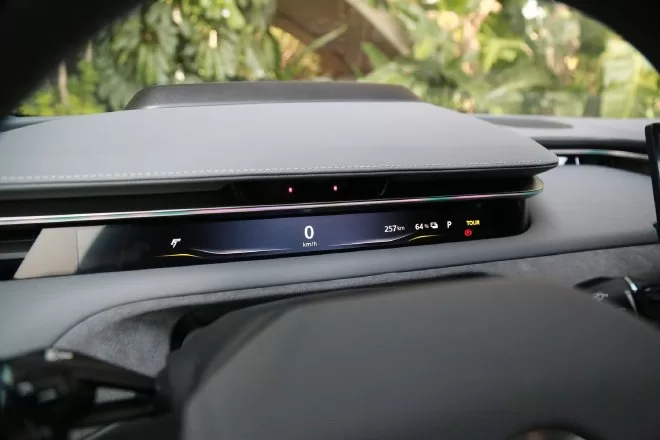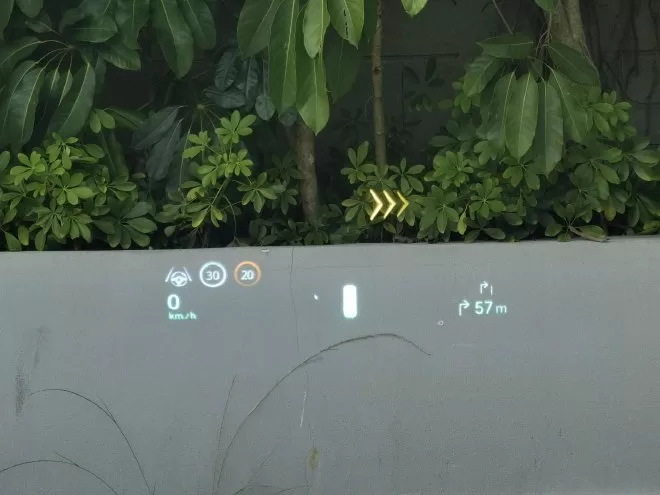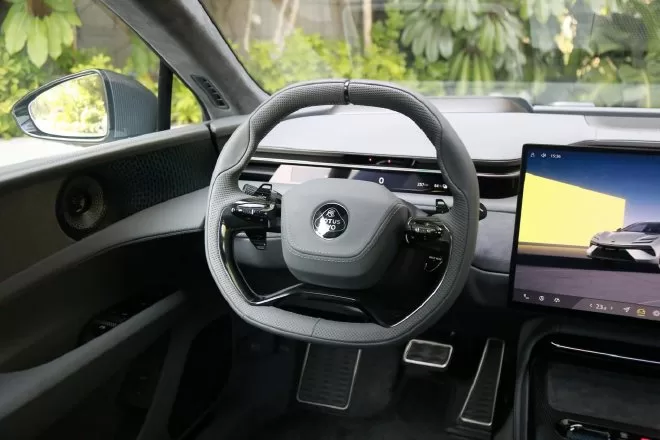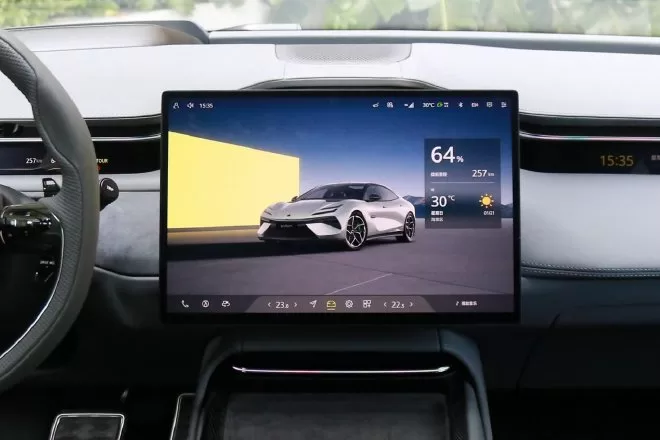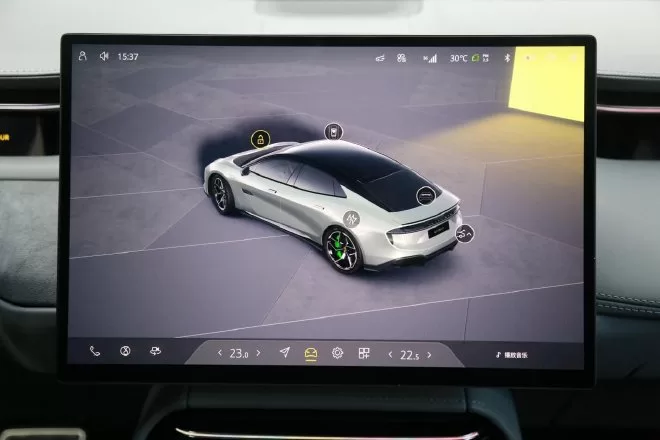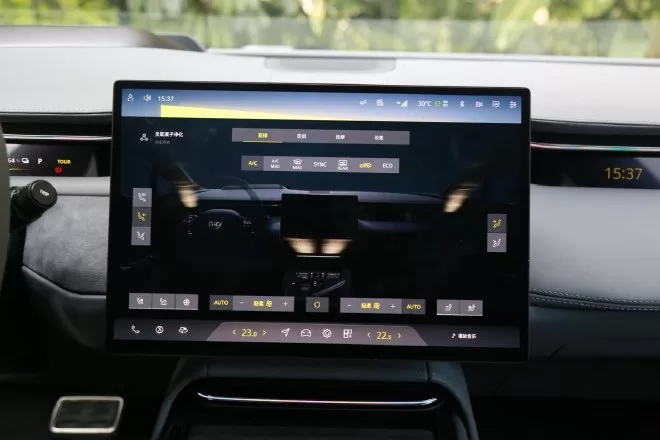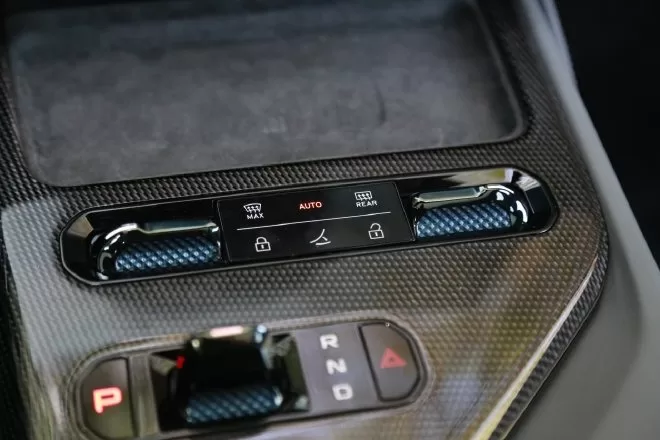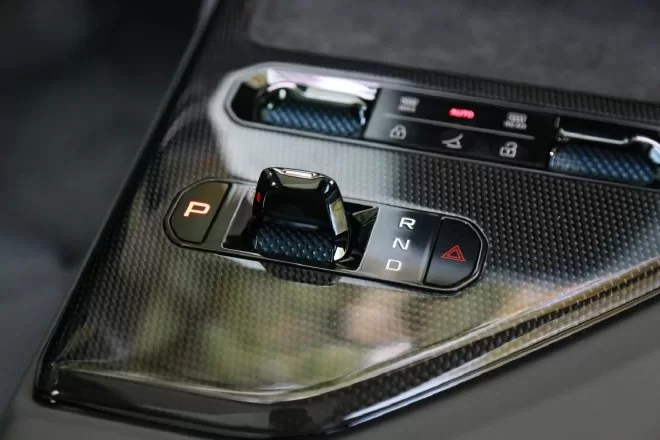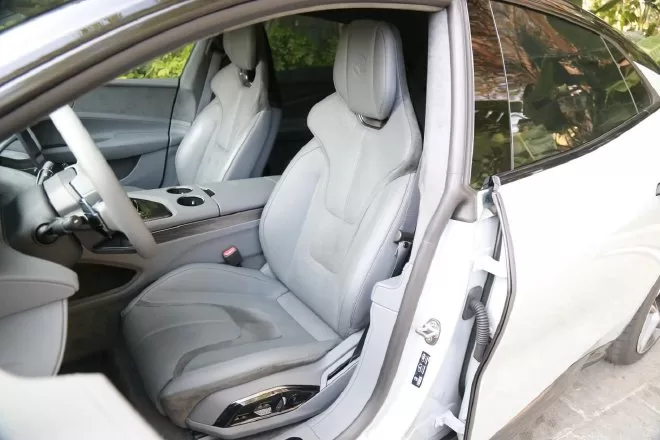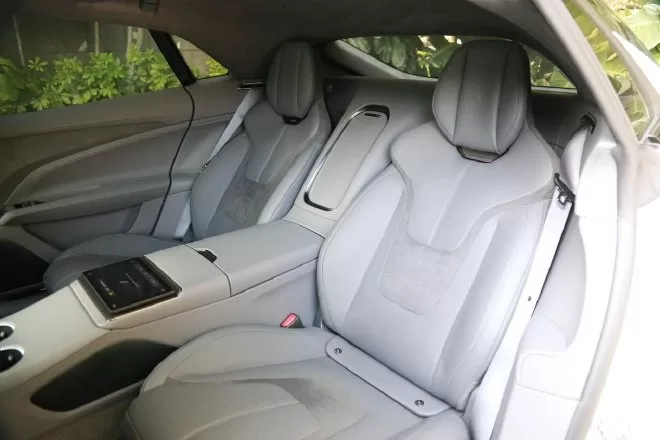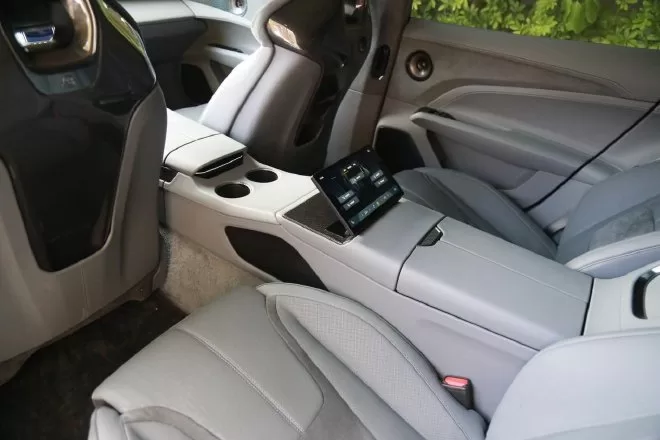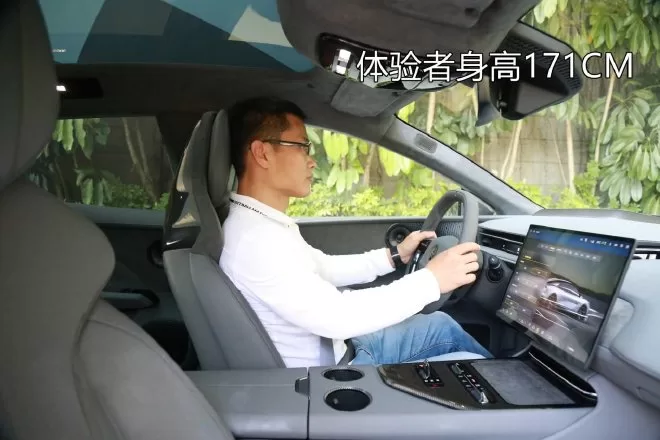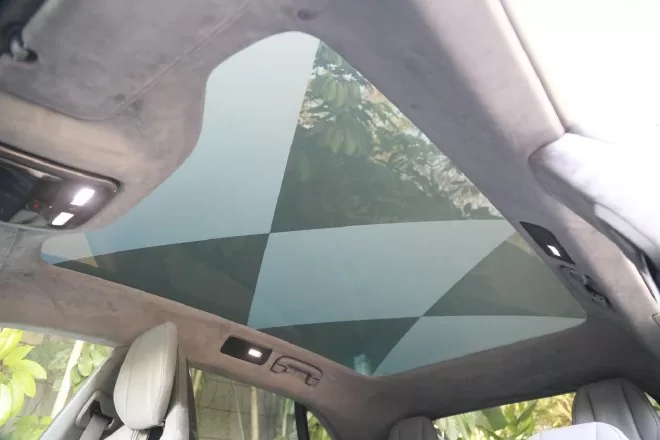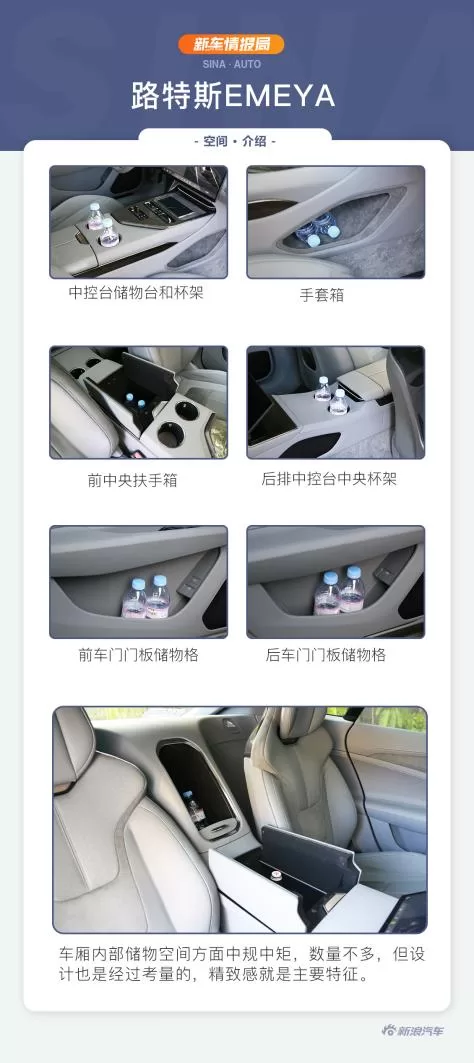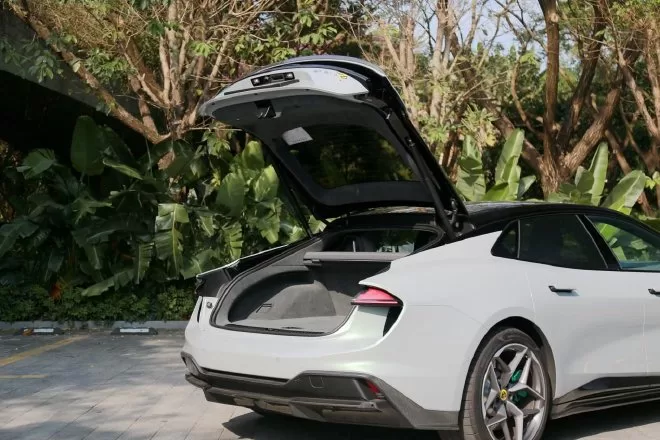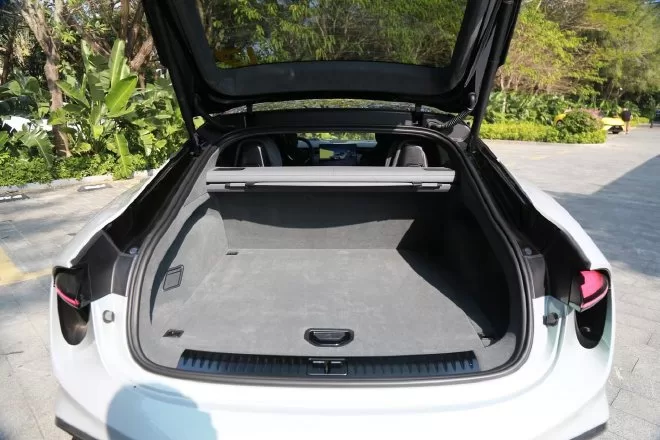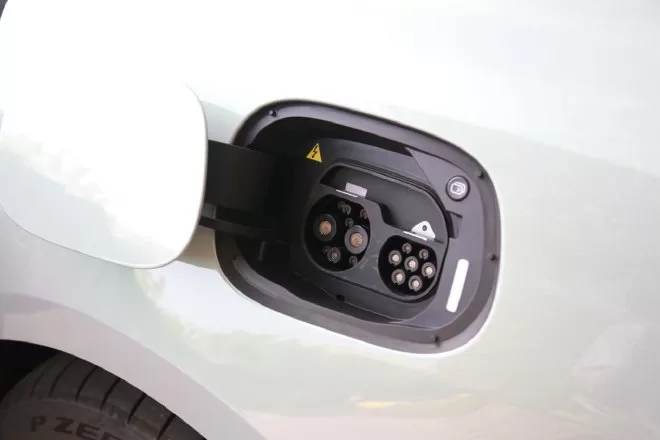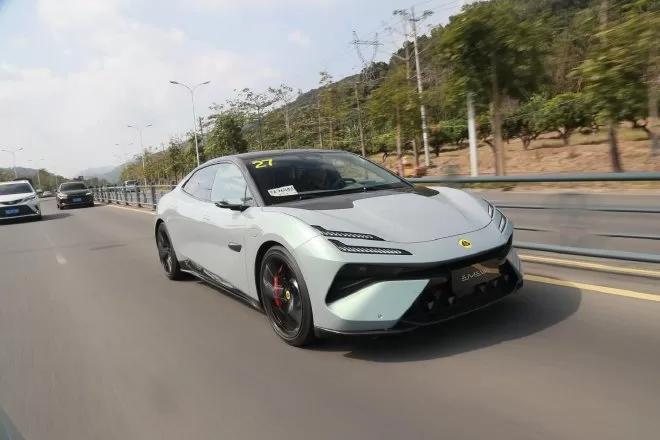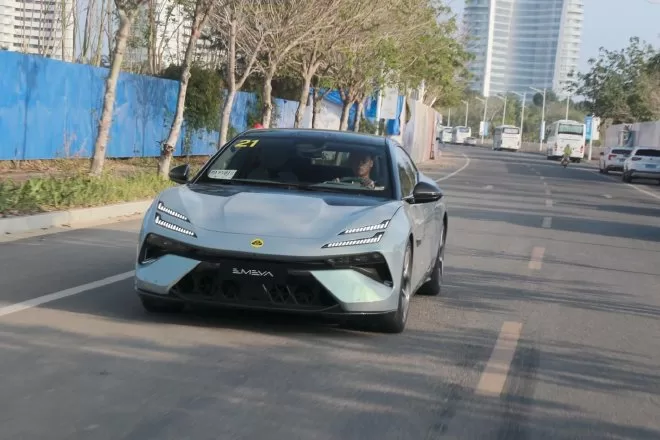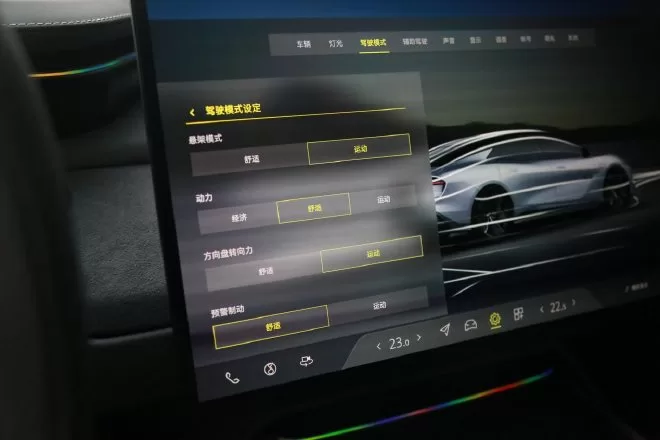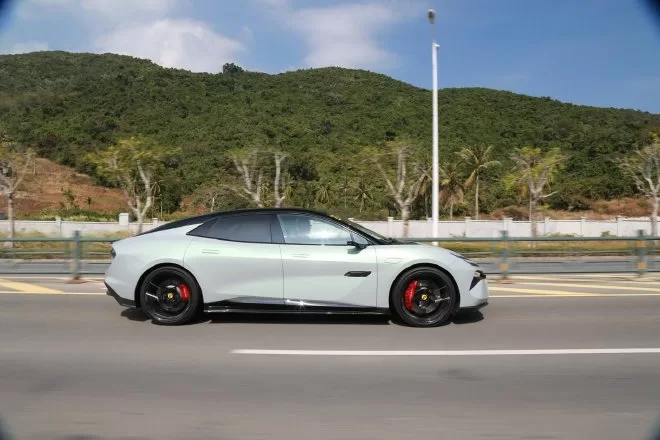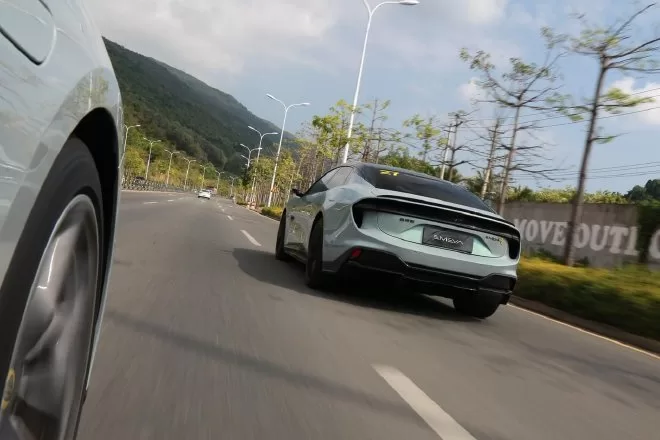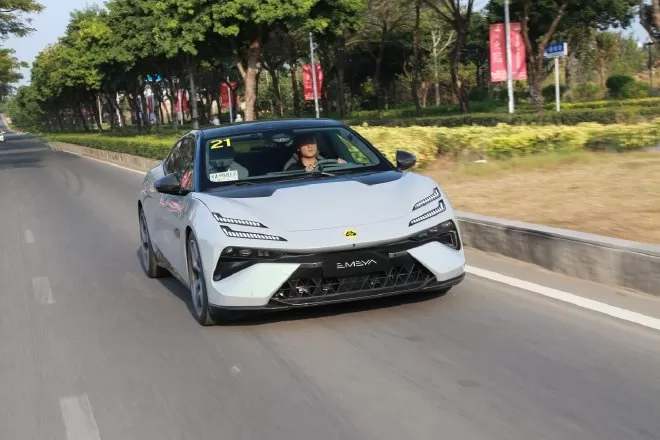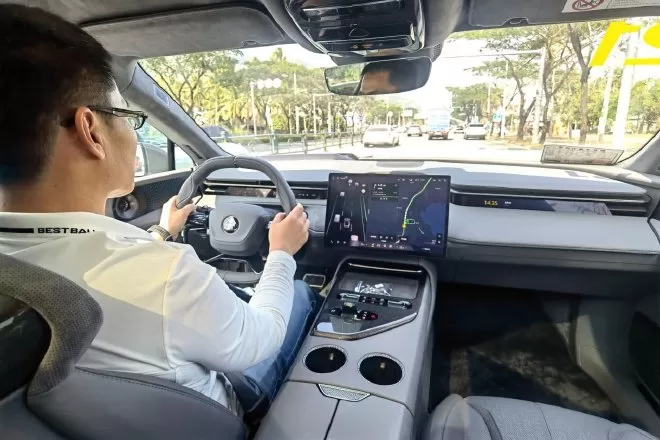After being acquired by Geely in 2017, Lotus, the once British supercar brand, is set to launch a new supercar that has been highly anticipated by Lotus fans. With the change in company background, Lotus has undergone another major change, which is electrification. Under the VISION80 strategy, after the debut of the Hypercar Lotus EVIJA and the fuel swan song EMIRA, Lotus has officially put its evolutionary thinking of electrification into practice, and the subsequent ELETRE has become the first model truly aimed at the “mass” market. But everyone knows that the SUV attribute of ELETRE is more of a show-off and “not sticking to the business”, just like the URUS to Lamborghini. Lotus can’t wait to bring out its inherent supercar genes and the value that a supercar should have to inject new life into the electric car field. Therefore, Lotus’s first million-dollar pure electric supercar GT debut, named EMEYA, with the Chinese name “Fanhua” (Blooming). Today, we also had our first intimate encounter with this new member of the Lotus family. ELETRE’s coupe version? Not that simple.
The Lotus EMEYA, although defined as a supercar, is difficult to associate with the traditional “supercar” image when you see it. It does not have the traditional mid-engine top sports car flavor, but rather the style of a non-standard four-door sedan. In addition, its large size also indicates that it also focuses on passenger space, so perhaps “supercar” refers to its performance level. However, similar to the “sedan version” of ELETRE, the lowered appearance does exude a high-end feel, and this new family-style exterior design has enough iconic features.
It also inherits Lotus’ relentless scrutiny of aerodynamics, with the iconic RACE-AERO duct design. The large ducts at the front and rear allow you to see the components behind them directly. With the active aerodynamic package, the car’s drag is variable, with a minimum drag coefficient of 0.21Cd and a maximum drag of 0.34Cd.
The front of the car has a wedge-shaped “shark nose” and a very sharp front face. It adopts the classic three-section air intake design, with a transverse active air intake grille in the middle. This is a consistent design technique for performance cars, in order to compress the air more efficiently and direct it more effectively to cool the electric system. The grille is still equipped with the same variable hexagonal active grille as ELETRE, and there are prominent moving parts at the surround to help the overall aerodynamics of the car.
With the DNA inheritance of the classic era of fuel vehicles, and the typical characteristics of intelligent driving in the new energy era. Like the ELETRE, this car has a front laser radar that can be raised and lowered, which is also located above the roof and on the sides of the fenders, so it is equipped with intelligent driving software and hardware strategies based on laser radar strategy. It is equipped with dual NVIDIA Orin X chips, 4 actively retractable laser radars, surround-view cameras, 4D imaging millimeter-wave radars, and millimeter-wave radars, and 34 other sensor hardware, capable of achieving urban navigation assistance driving functions.
The new car features sporty carbon fiber exterior mirrors, with the option for electronic folding mirrors for a wider and clearer view. It may take some time to adjust to the new perspective.
The headlights of the car are designed with upper and lower layers to achieve better lighting under a lower front end. The dual-piece L-blade LED daytime running light design is exaggerated, like double eyelids. The main headlight unit is hidden on both sides of the cross-shaped central grille, featuring ADB matrix headlights, which may look ordinary but still appear avant-garde and futuristic on such a low front end.
The side view of the EMEYA model has a full and sleek roofline, similar to the ELETRE. However, due to the design, the iconic “Becker Point” design of Lotus is not very obvious, but the overall side of the car still maintains a golden ratio, with a 50:50 front and rear axle load ratio, giving it a low and muscular look and a lower center of gravity. The black roof also adds a more aggressive look. In terms of body size, the new car measures 5139/2005/1464mm in length, width, and height, with a wheelbase of 3069mm.
The rear of the new car features a wide oval shape, with three layers from top to bottom. The rounded lines give it a fierce appearance, and the oval shape is also designed for aerodynamics.
The position of the entire continuous taillights is integrated into the elliptical groove, with a variable color taillight design style that appears more compact and lively, while the gradient color turn signal lights appear more advanced. The LOTUS NYO logo is arranged horizontally in the center, and the visual effect is more striking.
The new car comes with an active rear wing and diffuser. The dual-layered wing can provide a maximum downforce of 215 kilograms when raised. The bottom features a large black surround, giving a sense of performance with the rear air outlet and lower diffuser. It does not have any fake exhaust pipe styling plates, but instead has an electrically extendable air dam component, which looks quite intimidating when in motion.
It has a front-piercing aluminum six-piston brake caliper, and even a 10-piston carbon-ceramic composite brake system is optional, ensuring good braking performance and pedal feel. The wheels use a thin strip star-shaped design, 20-inch wheels filled with a sense of power and speed, matched with high-performance P ZERO tires customized by Pirelli, with a front wheel size of 265/40 R21 and a rear wheel size of 305/35 R21. The supercar’s cockpit can also be intelligent.
The simple cockpit that used to be the characteristic of Lotus, with everything at the service of the driver, should have its own new attitude in the new era of pure electric cars. The EMEYA floating T-shaped center console is sleek and layered, with each function area well-defined and 64-color ambient lighting keeping up with the latest technological advancements. The abundance of carbon fiber elements and materials such as Alcantara and Nappa leather create a strong and aggressive atmosphere.
Lotus has equipped the cockpit with two slender LCD screens for the left and right driver’s seats, and a large horizontal screen in the middle. There is also a large AR-HUD on the driver’s side to provide real-time driving information. The traditionally stubborn Lotus has finally caught up with digitalization.
The steering wheel adopts a flat-cut design, closer to a pure supercar, with a re-centered logo to increase the sporty feel. At the three o’clock position, there are still traditional multimedia and driving control dials and buttons. The left and right paddles behind control regenerative braking intensity and driving modes.
The 15.1-inch central control screen is equipped with dual Qualcomm Snapdragon 8155 chips and large memory. The LOTUS custom system on the car’s system uses computing power allocation technology, supported by software and hardware, making task processing more efficient and supporting task processing and linkage of all cabin screens in the entire vehicle.
The system still uses the mainstream interactive mode in UI design, with the ability to render virtual vehicles in real time on the main interface, providing a 3D entertainment interactive experience for vehicle linkage. Touching the details of the vehicle can unlock the doors, raise and lower the spoiler, open and close the charging port cover, and open the trunk, with excellent animation that allows you to feel different effects in various operations. The main function page interface is closer to the logic of a tablet, easy to use, but finding detailed operations is not that simple.
In terms of audio, the new car is equipped with British KEF audio, jointly created “ultimate panoramic space” with Dolby, and equipped with KEF’s unique Uni-Core technology, supporting a 23-channel audio system and 7.1.4 Dolby panoramic sound.
The automatic air conditioning section of EMEYA retains basic shortcut functions with physical buttons placed in the gear shift area. Detailed adjustments still require the central control screen, which features large virtual buttons for driver-friendly operation while driving.
The shifter is small and ergonomic, designed for easy reach when resting your forearm on the center armrest. It may seem disconnected from its high performance. Supercars can also be comfortable.
EMEYA’s seats are definitely among the widest in the crowd of sports cars, but they can also tightly hold your body and give you the same oppressive feeling as many racing seats. The entire surface of the seat is made of Alcantara suede and leather, with a style that looks like it could increase horsepower and a significant amount of friction. But obviously, it is not pursuing the ultimate wrap, because it also has multiple power adjustments, and even equipped with adjustable seat heating, ventilation, and even massage functions, which are not seen on pure sports cars.
As for the rear seats, the four-seat version we test drove is a typical flagship sedan, with the seat style and front row remaining identical. The rear seats can also adjust the backrest angle electronically.
In terms of comfort configuration, the independent central control screen can handle the configuration that a flagship sedan should have. It can be said that, whether from the cabin atmosphere or the basic configuration level, EMEYA has brought the track to life. Because of this, it has also become the most versatile racing car in Lotus history.
And in the creation of the entire space, it is not just for the consideration of the driver, the performance of the rear space is ideal enough, with sufficient lateral width and longitudinal leg space, and there is no sense of oppression in head space, making it easy for taller consumers to find a comfortable sitting position here. After both front and rear passengers have taken their seats, you will once again exclaim: This can’t be an executive sedan, can it?
It also offers a full carbon fiber roof, with a typical panoramic sunroof style. It retains the original car’s panoramic sunroof viewing while providing good sun protection. If you feel the atmosphere is not enough, it also has PDLC function, with 10 triangular zones that can show different light transmittance, flexibly opening the sci-fi effect.
The interior storage space of the car is average, with a limited quantity but carefully designed for a refined feel.
It has a classic hatchback design, so it is equipped with an electric tailgate with memory function for the opening angle. Due to the design of the shape, its trunk opening is wider, of course, the cost is that after the tailgate is opened, it is not easy for people with a small stature to reach the door key.
The trunk space is spacious and regular in shape, making it easy to store large items. The interior is lined with delicate fabric, providing a comfortable experience for all passengers. Although the rear seats cannot be folded down, they are sufficient for normal use.
In addition, as a new energy pure electric car, it is also equipped with a small storage compartment under the hood, and some things can be placed in the car. It is still a true supercar.
In terms of power, the Lotus EMEYA + we test drove is equipped with dual motors, with a maximum power of 225 kW for the front motor and 450 kW for the rear motor. The combined horsepower is huge. In addition, the super strong power also needs to be sorted out by two gearboxes. With the close cooperation of the system, its top speed reaches 256km/h, and the 0-100km/h acceleration time only takes 2.78 seconds. This is the quality that a pure electric supercar should have, not to mention traditional fuel cars, even in the new energy era.
In terms of battery life, the Kirin battery pack supplied by CATL has a capacity of 102kWh, and the CLTC can reach a maximum range of 650km. Our R+ will have reduced range. In terms of charging, born from the full 800V EPA pure electric high-performance architecture, EMEYA supports 800V fast charging. Fast charging can increase range by 180km in 5 minutes, and can charge from 10% to 80% in 15 minutes.
As a supercar, it naturally has a huge horsepower, but it also has a definition as a sedan, so it must also consider comfort. Therefore, the feeling of driving it will not be as aggressive as you might think. When there are passengers in the back seat, you need to provide them with enough comfort, and EMEYA can give you that. In comfort mode, without teasing the throttle, its power characteristics are not fundamentally different from many pure electric cars today, and you don’t need to make special adjustments to the throttle, brakes, or steering wheel.
But I believe when you drive it, you definitely won’t be so honest, because the atmosphere created by its cockpit is too tempting. Slightly press the accelerator, the front and rear large horsepower dual motors push such a car of more than five meters, but it seems quite agile. Be bolder and step on the accelerator pedal more forcefully, the car will rush forward like a runaway horse, here is a warning: at any time, grip the steering wheel tightly and stay alert, because the dizziness in the car during the zero to one hundred acceleration in just over two seconds is very strong.
For most people, its power is definitely excessive. However, the engineers have a great deal of expertise in power tuning, and they have a very precise balance between extreme strength and extreme gentleness. Its power can make you enjoy linear output proportional to the acceleration pedal angle in any speed range, and the two gears can accurately find the suitable speed for the scene. Economic/comfortable/sporty/track/personalized modes are optional, and its sport mode is very wild. In economic mode, the power is gentle and friendly, and every driving mode is set just right, with clear boundaries. However, to be verbose, caution is still needed when using the track mode. It’s really not something that ordinary beginners can handle.
Like most electric four-wheel drive models, it also has an electric four-wheel drive system due to the support of front and rear dual motors, and the distribution of driving force is completely adjusted by the computer according to real-time road conditions and even the driver’s needs. Similarly, in most cases, the power distribution of this car tends to be rear-wheel drive, logically, this is all routine operation.
By setting the kinetic energy recovery strength to the weakest mode, the system’s drag force is hardly noticeable, and it may even pull you along. Even in the strongest mode, the drag force of the power system still does not reach the single pedal logic you imagine, and the braking is not heavy. Obviously, this is a car that pays more attention to the driver’s sensory experience, and one of the goals of a supercar has never been energy saving. The calibration of the brake pedal is also the consistent style of a supercar, being very sensitive at the beginning, which needs to be noted.
The front double wishbone independent suspension combined with the rear multi-link independent suspension is naturally what this level of car should have. Top-notch equipment such as dual-chamber air suspension, rear-wheel steering, CDC continuous damping adjustable shock absorbers, intelligent anti-roll system, and so on, are all present. They work together to provide EMEYA with a 6D intelligent chassis, allowing the driver to become a smart racer as soon as they get in the car.
As a Lotus, it doesn’t prioritize comfort, and the driving control never has any objections, even the more approachable EMEYA. Despite the support of air suspension, the overall style is still tough. Faced with small to medium-sized bumps on the road, most road fractures and gravel, it can give you a clearer sense of the road than the average sports car, but it really doesn’t have that extreme, and the luxury score is higher. Its strength lies in corners or facing undulations, it can quickly grab the swaying body posture, with a strong sense of running.
As for the steering, it can be described as sharp. The steering column seems to be glued to your hand, with a sensitive response to even the slightest movement. The steering ratio is precise, without the common slack and lag of everyday cars. This is a typical sports car-level steering, an attitude that ordinary sedans cannot match. Summary: As the era of fossil fuels gradually fades away, we are also entering an era where there is no longer the roar of engines. Lotus, which once pursued the ultimate driving experience and “power-to-weight ratio,” has officially entered the new energy pure electric market. Its first mass-produced car, the ELETRE, is a “rebellious” SUV, while the second, with the title of a supercar, the EMEYA, has appeared in classic GT style. As the times change, Lotus’s new energy vehicles also undergo a transformation in appearance, but the DNA at its core is still that of a graceful “wind rider.”
